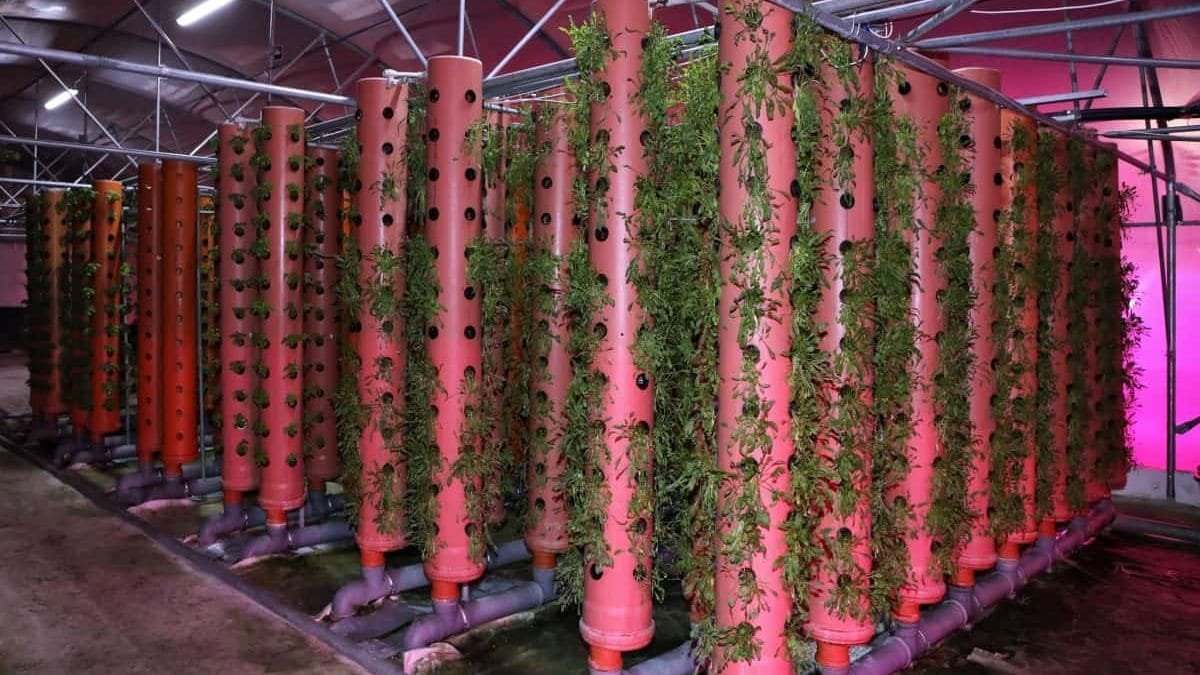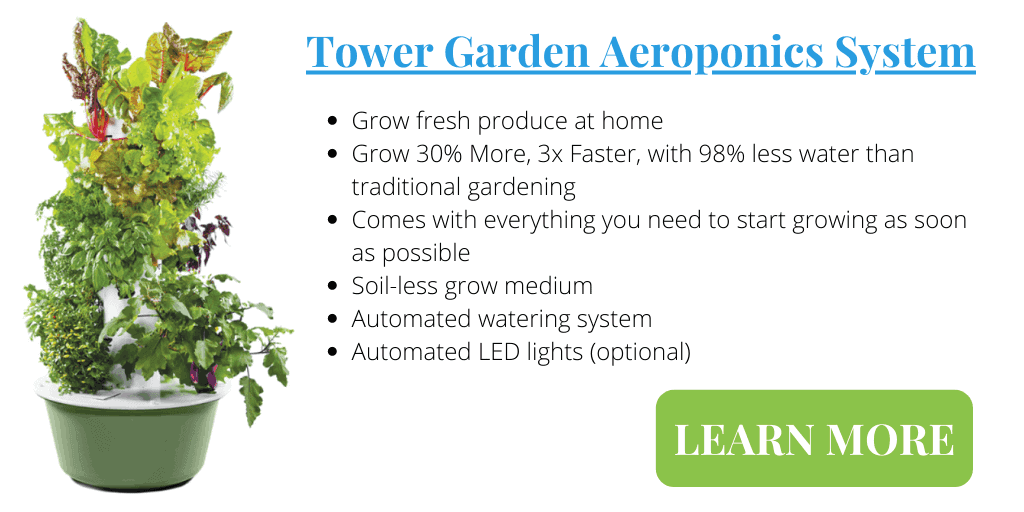Indoor vertical vegetable growing has created a revolution in local food production for home growers and city dwellers. The advantages of these innovative gardens can far outweigh the drawbacks of cost and reliance on technology.
Interior vertical gardening has many advantages, mainly increased crop yield in a smaller area, control over environmental conditions, more efficient water usage, and elimination of harmful chemicals and pesticides. The main disadvantages are it is labor-intensive, has higher up front costs, and is dependent on technology.
Urban interior vertical gardening is one of the fastest-growing trends in food production. Interior vertical farming has the potential to transform food production as we know it. However, there’s a lot more to discuss about how vertical farming is beneficial and how it may not be a great idea in some cases.

The Advantages Of An Interior Vertical Vegetable Garden
Vertical farming is a new self-sustainable method of food production that can be done on a small scale at home or at industrial scale in large cities and vacant buildings.
Vertical Gardening Increases Production
The efficient use of vertical gardening plays a significant role in increased and year-round production. Vertical gardening allows people to produce more crops from the same square footage compared to a traditional outdoor growing area.
Roughly speaking, one acre of an indoor area offers equivalent production to at least four to six acres of outdoor capacity. Year-round crop production is possible in a controlled indoor environment, which is completely controlled by vertical farming technologies.
- Grow 36 Plants:This indoor PVC-U pipe hydroponic system lets you grow up to 36 plants...
- 3X Faster Growth: 4 x 35.4-inch grow lights emit red, white, and blue growing light for optimal...
- Upgraded Water Circulation: Powerful 25W pump with a 216-inch max lift and 224 GPH flow rate,...
Interior Vertical Gardening Uses Less Water
There is less water used to cultivate vegetables in interior vertical gardening as the production of crops can be done with 70%-95% less water than normal cultivation requires. This means that droughts will have no adverse effects on vertical farming.
By using closed loop hydroponic systems, the nutrient solution that supplies food to the plants is continually recycled back into the reservoir to be used again. There is also very little evaporation because the water and mineral solution is never exposed to the open air and the indoor temperatures never reach extreme heat.
Find out more in my Guide to Hydroponic Nutrient Solutions
Interior Vertical Gardening Eliminates Harmful Chemicals
Plants in interior vertical gardens are healthy due to the consistent supply of high quality lighting, nutrients and stable growing conditions. Healthy plants are far less likely to be affected by harmful fungal growth, pests, soil-borne diseases, and weeds.
The use of chemicals like insecticides or pesticides are also eliminated, even vector-borne diseases can be eliminated. As crops are produced in a well-controlled indoor environment without chemical pesticides, vertical farming allows us to grow pesticide-free and organic crops.
Have you ever wondered Can Hydroponics Be Organic? Get the full explanation in my recent article.
Vertical Hydroponic Plants Grow Faster and Bigger
Hydroponic plants grow faster than plants grown in soil because no energy is wasted trying to spread roots in search of nutrients. The nutrient solution delivers all the macro and micro nutrients directly to the plant’s roots so it can focus all its energy on growing big and healthy.
I grow most of my herbs, greens and strawberries at home using the Tower Garden vertical aeroponic system. I use the automated growing tower to grow 20+ plants in the corner of my home office.
My Tower Garden provides me with fresh produce all year long and only takes a few minutes a week to check the water and nutrient levels. I find myself snacking directly from the tower in between picking fresh herbs and veggies for my home cooked meals.
Get all the details about my Tower Garden and how it works.

Vertical Farming is Less Hazardous
Interior vertical vegetable gardening can significantly reduce the occupational hazards of traditional farming. This is because exposure to heavy equipment, poisonous chemicals, extreme weather conditions etc., is virtually non-existent.
See my latest article answering the many questions on are hydroponics is good for the environment.
Complete Environmental Control With Indoor Gardening
Crops in a field can be adversely affected by natural weather, pest and disease problems. In contrast, crops grown in interior vertical gardens are protected from harsh weather conditions and disturbances like droughts, cyclones, snow, floods, etc. It’s also easier to prevent pests and disease from damaging the plants and harvests.
Environmental control is one of the major benefits that make interior vertical vegetable gardening very appealing. Temperature, humidity levels, daylight hours and more can be easily controlled whether you are operating a vertical garden at home or as a business.
My recent article covers the importance of a dehumidifier and where to place it in a grow room.
Growing Vertical Gets Better Light Coverage
The combination of more efficient full spectrum LED lighting and the organization of a vertical garden makes it easier to provide the best amount and intensity of light exactly where its needed. Unlike natural sunshine which moves throughout the day casting shadows on some areas, LED light bars can be positioned vertically beside or horizontally over top of your plants.
The advancements in lighting technology has made LED light fixtures more efficient and cheaper to purchase and operate. The reduction in heat generated from LED lights allows them to be placed close to the plants without burning them.
See more details on the Lighting Requirements for Indoor Growing
Vertical Gardening is Great For Biodiversity
Vertical gardening is great for biodiversity as it does not disturb natural animal and tree habitats. Because only limited space is used, further conservation of local fauna and flora is possible.
Various plants can be incorporated within a vertical garden to create biodiversity as well, and there is no clear cutting, soil disruption or agricultural run off.
Vertical Gardens Can Function As Natural Air Purifiers
Vertical gardens can function as natural air purifiers if air-purifying plants are incorporated into the vegetable garden. These plants improve indoor air quality by absorbing harmful VOCs and other toxins like benzene, carbon monoxide, formaldehyde, and trichloroethylene from the indoor air.
Buildings Get Repurposed For Vertical Gardening
Properties and buildings that were abandoned or unused have been repurposed and used productively instead of a new building having to be built. This has a positive impact on the environment and cost of food in locations that are often classified as food deserts.
Vertical Gardens Look More Organized And Visually Appealing
An interior vertical garden looks aesthetically pleasing. It looks organized and clutter-free compared to potted plants kept on tables and floors.
The fact that vertical gardens can be arranged to create patterns that form a colorful accent feature within a selected space also adds to their appealing look.
The Disadvantages Of An Interior Vertical Vegetable Garden
Before rushing full-speed with interior vertical farming, there are a few cons to consider.
Vertical Gardens Are Cost-Intensive
Home and hobby gardeners can get their hands on vertical vegetable gardens at reasonable prices online or can choose to build their own system from parts at the local hardware store.
The initial design and build phase of a commercial indoor vertical vegetable garden can be cost-intensive. Large glass greenhouse structures and their associated automation systems are expensive but also increase the yield size and reliability of crops.
Although abandoned buildings can be used, other costs to run and maintain vertical farming such as lighting, heating, and labor, can offset the benefits we can get from the output of vertical farming.
A Vertical Garden Has A Controlled And Limiting Environment
There are fewer foods to choose from because not all fruits and vegetables are suitable for growing in a vertical garden. Fruit trees are too large and require too much height for stacked vertical gardens and some root vegetables don’t lend themselves to hydroponic growing.
There is no presence of insects, meaning there will be difficulties with pollination. This means that the pollination process will have to be done manually which becomes more labor-intensive and costly with added height.
Vertical Gardening Has High Labour Costs
As high as energy costs in vertical farming can be, labor costs can be even higher because of their concentration in urban centers where wages are higher, and there is a need for more skilled labor.
However, automation in vertical vegetable gardens could lead to reduced labor costs as systems get developed to combat these issues.
How Vertical Farming Is Dependent On Technology
The development of better technology can increase effectiveness and efficiency and lessen costs. However, as vertical farming is dependent on electricity and other various technologies for lighting, maintaining temperature, and humidity, losing power for just a single day can be very costly and hinder the growth of vegetables and plants.
Conclusion
Interior vertical vegetable gardening has a lot of promise and the basis of what farming will be like in the future. Vertical gardening is a popular farming method because it provides many environmental and production benefits.

